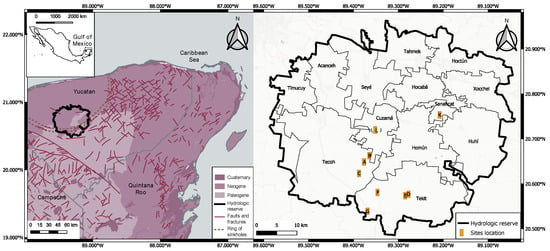Beta-amylases (BAMs, EC 3.2.1.2), belonging to a multigene family, play a pivotal role in starch breakdown and are also involved in hormonal and stress responses, notably to cold stress. Pomegranate trees (
Punica granatum L.) are adapted to warm climates and are sensitive
[...] Read more.
Beta-amylases (BAMs, EC 3.2.1.2), belonging to a multigene family, play a pivotal role in starch breakdown and are also involved in hormonal and stress responses, notably to cold stress. Pomegranate trees (
Punica granatum L.) are adapted to warm climates and are sensitive to cold temperatures. In this study, we analyzed eight
PgBAM genes from the pomegranate genome dataset. These members unevenly distributed across chromosomes and were categorized into four groups based on their orthologous members. The motif composition was highly consistent among most members. In contrast, exon numbers and arrangements were conserved within groups or subgroups, whereas significant diversity was observed between different groups. A syntenic analysis revealed that three
PgBAM members (
PgBAM1/4/5) showed a total of 11 syntenic relationships with the
BAM members from Arabidopsis, kiwifruit, and Chinese white pear, respectively. Promoter binding motif prediction suggested potential roles for
PgBAMs’ genes in light, stress, hormones, and development signaling. Gene expression indicated that
PgBAM4 was predominantly expressed in leaves,
PgBAM7 in flowers, and
PgBAM8 in roots and leaves and during fruit ripening, particularly in pericarp development. A transcriptome analysis identified the starch and sucrose metabolism pathway (map00500) as a key factor in the cold stress response of cold-sensitive cultivar ‘Tunisia’ seedlings.
PgBAM4 exhibited remarkable expression and was closely associated with the cold-responsive
BAM genes, characterized by a closer phylogenetic relationship, conserved catalytic residues, and similar secondary and tertiary structures. Moreover, the differences in soluble sugar levels and
PgBAM4 expression were closely associated with the varying cold stress resistance observed between ‘Tunisia’ and ‘Sanbai’ seedlings. Furthermore, yeast one-hybrid assays confirmed that PgCBF7, a critical transcription factor for enhancing freezing tolerance, binds to the promoter region of
PgBAM4. Our findings provide a systematic overview of the
PgBAM gene family and shed new light on the regulatory mechanisms underlying cold stress tolerance in pomegranate.
Full article
 IJMS
IMPACT
IJMS
IMPACT Applied Sciences
IMPACT
Applied Sciences
IMPACT Sustainability
IMPACT
Sustainability
IMPACT Sensors
IMPACT
Sensors
IMPACT JCM
IMPACT
JCM
IMPACT Materials
IMPACT
Materials
IMPACT Molecules
IMPACT
Molecules
IMPACT Energies
IMPACT
Energies
IMPACT Electronics
IMPACT
Electronics
IMPACT Remote Sensing
IMPACT
Remote Sensing
IMPACT Cancers
IMPACT
Cancers
IMPACT Nutrients
IMPACT
Nutrients
IMPACT Mathematics
IMPACT
Mathematics
IMPACT Foods
IMPACT
Foods
IMPACT Buildings
IMPACT
Buildings
IMPACT Polymers
IMPACT
Polymers
IMPACT Animals
IMPACT
Animals
IMPACT Water
IMPACT
Water
IMPACT Plants
IMPACT
Plants
IMPACT Agronomy
IMPACT
Agronomy
IMPACT Biomedicines
IMPACT
Biomedicines
IMPACT Processes
IMPACT
Processes
IMPACT Microorganisms
IMPACT
Microorganisms
IMPACT Diagnostics
IMPACT
Diagnostics
IMPACT Nanomaterials
IMPACT
Nanomaterials
IMPACT Viruses
IMPACT
Viruses
IMPACT Medicina
IMPACT
Medicina
IMPACT Healthcare
IMPACT
Healthcare
IMPACT Cells
IMPACT
Cells
IMPACT Forests
IMPACT
Forests
IMPACT Agriculture
IMPACT
Agriculture
IMPACT Land
IMPACT
Land
IMPACT JMSE
IMPACT
JMSE
IMPACT IJERPH
IJERPH
 Symmetry
IMPACT
Symmetry
IMPACT Genes
IMPACT
Genes
IMPACT Pharmaceutics
IMPACT
Pharmaceutics
IMPACT Coatings
IMPACT
Coatings
IMPACT Micromachines
IMPACT
Micromachines
IMPACT Pharmaceuticals
IMPACT
Pharmaceuticals
IMPACT Atmosphere
IMPACT
Atmosphere
IMPACT Children
IMPACT
Children
IMPACT Religions
IMPACT
Religions
IMPACT Antioxidants
IMPACT
Antioxidants
IMPACT Life
IMPACT
Life
IMPACT Metals
IMPACT
Metals
IMPACT Biomolecules
IMPACT
Biomolecules
IMPACT Vaccines
IMPACT
Vaccines
IMPACT Education Sciences
IMPACT
Education Sciences
IMPACT Minerals
IMPACT
Minerals
IMPACT Horticulturae
IMPACT
Horticulturae
IMPACT Brain Sciences
IMPACT
Brain Sciences
IMPACT JPM
IMPACT
JPM
IMPACT Bioengineering
IMPACT
Bioengineering
IMPACT















